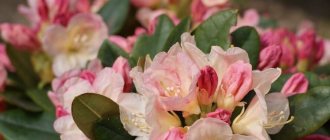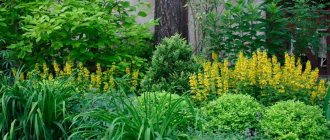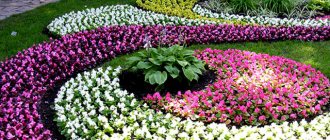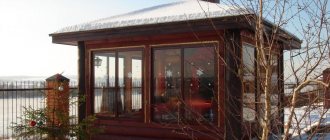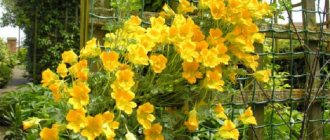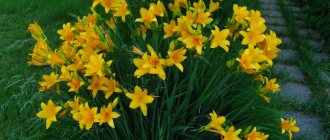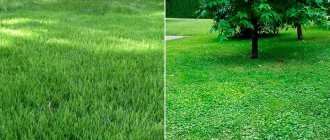Types of weeds
Let's consider the types of weeds in the garden: prickly, low-growing, tall, with white and yellowish flowers in the garden and fields, and other well-known ones.
Spiny
Soot. The most popular thorny weed is field thistle or thistle. It ripens in August, the seeds begin to germinate from the beginning of autumn, the depth to which it can grow is 1.5 meters. This is a very noxious weed that is difficult to get rid of.
To clear the garden of this type of weed, complex actions are required. To minimize damage to the garden, the plant must be cut off all the time so that it does not bloom. You can get rid of it using agrotechnical methods - digging the ground with a pitchfork, cutting shoots and weeding.
Folk remedies include diluted alcohol 150 ml in a 10 liter bucket of water, soda, table salt or vinegar. You can get rid of it by using chemicals, but the land will have to rest from the harvest all year.
Stinging nettle (common nettle)
This is a perennial plant. It is good for health, but to avoid overgrowth you need to mulch the beds, treat the areas with herbicides, and use potassium salt. Weeding helps.
Thistle
Getting rid of it is difficult because there are not many thorns and thorns. You will have to constantly cut the root until it becomes thin and dries out. You can get rid of it by using chemicals.
Evening primrose
Evening primrose bushes quickly grow into a dense, beautiful carpet up to 30 cm high and bloom profusely with bright yellow flowers from June to August. The plant is unpretentious - it feels normal in soils that are poorly enriched with nutrients. Grows well on loose loamy soils.
What habits and phrases should you give up to overcome self-doubt?
Tatyana Arntgolts gave birth to a child from Mark Bogatyrev: the first photo of the baby
Growing cucumbers in bags and getting the earliest harvest: a simple trick
Low growing weeds
- Common sorrel is a perennial plant also called hare cabbage. It grows to a maximum of 12 cm, is resistant to herbicides and is better weeded. You should fight it with chemicals, liming the soil or removing the top layer of soil.
- Bluegrass is an annual weed. The best control is weeding; you can use Magnum or Lontrel-300 herbicides.
- Creeping Buttercup - New weeds grow instantly. Buttercups are easy to remove, but it is better to use a special garden fork. When removed by hand, there is a possibility that roots will remain in the ground.
- Clover - To remove clover by the roots, the ground is moistened and it is removed using a narrow trowel.
- Veronica filamentous - Kills the grass. When buds form, herbicides are effective. In severe cases, you can get rid of it using chemicals.
Cereals
Today there is a real “cereal boom” in landscape design, and all because in our fast-paced age of all kinds of technologies and innovations, people want to break out of the frantic rhythm, take a break from the bustle, and contemplate natural colors. Specialists search and find new shapes, textures, colors, but not bright, flashy, but calm shades; they draw inspiration and new ideas from nature itself. Therefore, if you want to make your garden plot unusual and fashionable, plant grains!
Botanical certificate
Cereals (Poagrass) are a family of plants of the Monocot class, including more than 11,500 species. Represented by shrubs, perennials, and annual herbs. They have long, cylindrical shoots that are hollow at the internodes. The leaves are narrow, two-rowed, with an open sheath; arranged alternately on the stem. The root system is fibrous. Inflorescences: spike, panicle, spike-shaped panicle, spadix, raceme. The flowers are small and inconspicuous. Cereals are characterized by self- and wind-pollination.
Cereals are truly universal plants: they grow on poor and fertile soils, in the sun and in the shade, there are drought-resistant and moisture-loving species
They are distributed on all continents. Representatives: rye, wheat, rice, barley, corn, bamboo, sugar cane, feather grass, meadow grass, red fescue, thin bentgrass and others.
The choice of varieties today is very wide - over 300 varieties are used to decorate urban and household areas. The richness of species composition and the adaptability of cereals to a variety of habitat conditions make it possible to select varieties for any site.
Classification
In relation to temperature, and, consequently, the time of the beginning of the growing season, all cereals are divided into two groups: cold-growing and warm-growing.
We summarized their characteristics, care features, and species names in the table:
| Group | Features of the growing season | Care | Representatives |
| Cold-growing (cold-season) | Winter-hardy. The beginning of the growing season at t from 0 ℃. The period of active growth is spring and autumn; flowering: May – early June, panicles persist all summer and autumn. Dormant period (decrease in growth, loss of color and decorativeness) – summer | The optimal time for dividing and replanting is early spring or from late summer to mid-autumn. Pruning is carried out in the spring | Spreading boron, soft broom, acuminate reed grass, hedgehog grass, reed canarygrass, meadow foxtail, great manna, forest fire, snowy fire, sheep, pike, feather grass, spreading rush, middle shaker, blue sesleria, maned barley |
| Warm-growing (warm-season) | Heat-loving. They begin to grow after the soil has completely warmed up, at t +25 ℃ and above. Flowering - mid-summer (some species bloom in early autumn) | Dividing and replanting - during the period of active growth in the summer before flowering at a height of no more than 15 cm. Pruning in spring. Long-empty spaces around curtains can be planted with bulbous flowers that bloom in early spring. | Gerardi's bearded man, booze, sand grass, blue grass, imperata, miscanthus, molinia, cattail, southern reed, sporobol, switchgrass |
Cereals are planted in flower beds, where they play the role of background, main accent or frame.
Reed canary grass took its place in the border next to Japanese spirea and sedums
Grasses can act as the general background of all plantings or solo, such as the amazing Cortaderia dioica or pampas grass. A real garden decoration!
Cortaderia usually blooms with white or cream-colored panicles that reach a height of up to 1 m! Breeders have developed varieties with pink, lilac, and silver inflorescences
Chinese miscanthus , or fan flower, is very popular among designers. In the next photo he is on the right.
An example of a successful composition with a beautiful combination of plant shapes and colors: reed grass, miscanthus, lavender
Not all varieties of Chinese miscanthus have time to bloom in our climate, but the cereal is valued precisely for its decorative panicles, which are also good in winter against the backdrop of snow. In addition, many of them are not adapted to cold wintering. The following varieties are suitable for the conditions of the middle zone: “Silberfeder”, “Malepartus”, “Rothsilber”, “Nippon”.
Low-growing grasses will look good on an alpine hill, creating compact hummocks. They are also used to fill voids in flower beds, design paths, and plant in flowerpots.
Unpretentious gray fescue is distinguished by its bluish leaf color and small size - up to 25-30 cm
Tall weeds
Ambrosia artemifolia
This weed is very tall, it can grow up to 2.5 meters. Harms the fields. Eliminated by digging and chemicals.
Ezhovnik (chicken millet)
Threat to carrots and beets. Propagated by seeds, it is extremely difficult to breed. Chemicals and weeding help.
Meadow salsify
Although it is a weed, it is a medicinal plant with a maximum length of up to a meter. Fight with weeding and chemicals, herbicides.
White pigweed
This weed is not afraid of frost and temperature changes. Starts to grow in spring. The roots are not deep, so they are removed by weeding.
Shchiritsa thrown back
Annual dense weed. A simple dig will help you quickly get rid of it.
Weeds with yellowish flowers
Meadow salsify
It grows both in the forest and in the garden plot. Biennial herb with a maximum height of one meter. Sweetish taste of the root vegetable. Removal is effective when weeding and using chemicals.
Creeping buttercup
Loves humidity and darkness. It is not prone to chemicals, so it is weeded even before the seeds appear.
Euphorbia squat
It has a powerful stem and a long root system. Difficult to remove. It requires digging up the soil and using herbicides.
Dandelion
It grows where nothing is planted. You can't get by with herbicides alone.
Classification of weeds
Based on three biological characteristics, it is customary to classify weeds according to:
- life expectancy;
- method of reproduction;
- way of eating.
Based on the characteristic of life expectancy, weeds are divided into young and perennial.
Minors
Seed propagation is the main method for young weeds. This group includes:
- ephemerals - herbs belonging to this group have a growing season of less than one season;
- spring - the growing season for weeds of this group is the same as for annual grasses. Often, plantings with cultivated plants become clogged with just such weeds;
- winter annuals - these grasses sprout in the autumn months. They usually infest perennial grasses, as well as wheat crops;
- biennial - their full development cycle consists of two growing seasons.
Perennial
The peculiarity of perennial weeds is that they can grow in one place for up to 4 years. After the seeds have ripened, the ground organs of such herbs die off , while their root system continues to develop. Every year, weeds grow stems from the underground part. Reproduction of perennial weeds occurs either by seeds or vegetatively.
Based on the type of nutrition, all weeds are divided into the following types:
- non-parasitic weeds - their peculiarity is that they have independent nutrition and their development does not depend on other plants. Note that this group of plants is the most numerous;
- semi-parasitic weeds - weeds included in this group have the ability to photosynthesize, but at the same time can partially feed on other plants. To do this, they attach themselves to the roots and ground organs of other crops;
- parasitic weeds - these weeds do not have green leaves and roots , so they are not capable of photosynthesis. Their nutrition comes from other plants. To obtain food, they attach to the roots and stems of other plants.
Recent Entries
Chainsaw or electric saw - what to choose for the garden? 4 mistakes when growing tomatoes in pots that almost all housewives make Secrets of growing seedlings from the Japanese, who are very sensitive to the soil
Grass with white flowers
Field bindweed
Or perennial “birch”. It does not allow crops to grow because it entwines up to two hundred centimeters of crops. If the garden is overgrown with bindweed, then it needs to be dug up or gotten rid of with herbicides.
Galinzoga quadriradiata
It is characterized by excellent viability and produces many roots. It can be eliminated by cleaning and it is preferable to do this before flowering.
Hare cabbage
It has branched roots and suffocates plants. Chemicals are not scary. Only the roots need to be removed.
woodlouse
Because of this, carrots usually suffer. It is easily weeded and can also be used as livestock feed.
Shepherd's Purse
It is an annual plant, but produces many seeds as it grows. Therefore, you will be surprised to know that their viability is up to 35 years. Therefore, its removal is required even before flowering begins.
Yarutka field
Grows in abandoned places and cultivated fields. The weed is removed with herbicides.
Canadian small petal
It interferes with fruit bearing and can only be gotten rid of with herbicides or weeding.
Rules for organizing an aromatic garden
To organize a herb garden, you should follow several rules:
- If you plant a lot of aromatic herbs in one area, they will create an overly fragrant garden. When mixing aromas, plantings can cause irritation, even allergies. Fragrant plants should be planted further away from each other.
- Herbs that like water or shade should be planted in one place, without mixing them with sun-loving spices.
- Plants that require different feedings should be planted at different ends of the garden bed.
- If plants need shelter for the winter, they can be planted nearby.
Features of growing different plants
Each herb requires its own growing conditions. Select plants so that several species can grow on the same type of soil.
Plant sun-loving plants where there is a lot of sun, because this is not in vain. Sun-loving garden plants accumulate more useful substances in their greenery if they grow in the sun.
Some plants have roots that grow too widely, so they need to be separated from other plantings.
Separate tall seedlings so that they do not shade low plantings. Those plants that need weeding during the summer should be planted at the edge of the bed.
General rules for planting herbs
General rules for organizing a fragrant garden bed at your dacha:
- First, sort your herbs according to their care needs.
- For convenience, plant nearby plants that ripen at the same time so that harvesting takes place at the same time.
- Don’t be afraid to plant annuals and perennials next to each other; they will not interfere with each other.
- Place tall herbs in the middle of the bed, short ones at the edges.
- Caring for all herbs - loosening, hilling, fertilizing.
- Provide winter rest for perennial plantings in the form of mulching and shelter.
Care and planting according to the rules will help you grow healthy and aromatic spices.
What herbs can be planted nearby?
Experts have prepared options for combining herbs that grow well together:
- onions and dill;
- parsley, cilantro, onion and dill, basil;
- parsley, onion, garlic, celery;
- onions, garlic, horseradish, fennel, beans;
- onions, dill, celery, rosemary;
- mint and dill;
- thyme and anise;
- rosemary, thyme and sage.
Weeds with blue or purple flowers
The following weed names have blue or purple flowers.
Commelina vulgaris
Can be removed by weeding, mulching, herbicides. Fragrant violet is a perennial plant. The seeds are spread by ants. Can only be weeded and mulched.
Pink weeds
- Pink thistle is a good honey plant. With large roots it goes deep up to 6 meters. It gets weeded out, but it also appears quickly. Herbicides will be effective here.
- The clearweed grows to a depth of 40 cm. It loves shade. Removed by weeding.
- Thurmer's thistle is removed by regular lawn mowing or weeding.
- Climbing weeds prevent plantings from growing. These include moss and bindweed. You need to fight it using drainage and cutting.
Weeds with long roots
- Wheatgrass is very tenacious and reproduces by seeds. It is recommended to remove by weeding in August, when it is weaker.
- Goldenrod leaves the soil devastated. Mow it only before flowering.
- The nightshade fruiting weed has many seeds. Mow and treat with Roundup or Glyphosate chemicals.
- Herbs with small leaves include upturned acorn and garden purslane. They are removed by weeding or digging, using a solution of Roundup with other herbicides.
- Sticky grass up to 1 meter long loves calcareous soils. Remove it before flowering begins; weeding helps.
Use in folk medicine
The peoples of Asia, Ancient Rus', Greece and Rome knew well the medicinal properties and contraindications of p. tenacious in order to successfully use it in the treatment of various diseases:
- sore throat, flu, acute respiratory infections;
- skin rash, dermatosis, psoriasis;
- skin ulcers;
- cystitis - inflammation of the bladder;
- pneumonia - inflammation of the lungs;
- tumors, oncological diseases;
- tuberculosis;
- urolithiasis disease;
- pathologies of the kidneys and gastrointestinal tract;
- arthritis – inflammation of the joints;
- menstrual irregularities;
- diseases of the cardiovascular system.
The herb is used internally and externally in a variety of forms - decoction, infusion, ointment and powder.
External use of a bedstraw-based product is recommended for skin lesions, for example, in a lotion or bath.
Infusions for kidney stones
Take: 4 teaspoons of dry herb, 500 ml of hot water.
Preparation: Place the herb in a container and add hot water. Leave for 3-4 hours, then filter. It is recommended to brew in a thermos to prevent the infusion from cooling. Next, drink 150 ml of the resulting medicine in small sips 4 times a day. The course of treatment is 21 days.
For arthritis
Take: bedstraw grass powder and vodka.
Preparation: You need to take a glass container with a volume of 0.5 liters. Fill it halfway with dry bedstraw grass. Then pour vodka to the top. Place the container in a dark, dry place for 21 days. Check and shake the jar regularly. After 3 weeks, you need to take out the jar, strain the contents and rub the resulting product on the sore joints 3 times a day for 14 days. After a break for a month, the treatment can be repeated.
Skin lesions
Take: 3 tablespoons of chopped herbs, 750 ml of hot water.
Preparation: Pour boiling water over the herb in a thermos and let it brew for 4 hours. After which the infusion must be filtered and applied as a compress to the affected areas of the skin. Apply compresses 1-2 times a day. You can add the solution to the bath.
Oncological female diseases
Take: 4 teaspoons of chopped herbs, 250 ml of hot water.
Preparation: Pour hot water over the herb and leave for 3 hours. After this, strain. Drink a quarter glass in small sips 3 times a day.
Teas and decoctions
For pathologies of the oral cavity, you need to take: 3 teaspoons of chopped herbs and 0.5 liters of cold water.
Preparation: Pour cold water over the herb and put on fire. Bring to a boil and cook for 5 minutes. Pour the resulting broth into a thermos or wrap it in a towel to prevent cooling and leave it for 60 minutes. Strain the resulting broth and take 1/3 of the solution 3 times a day 30 minutes before meals.
Tea to treat urinary retention
Take: 2 teaspoons of Tenacious Bedstraw, 250 ml of water.
Preparation: Put the water to boil. When it boils, add the herb and cook for several minutes. Drink the resulting solution up to 3 glasses a day for swelling, urinary retention and kidney inflammation.
Hemostatic
Take: 2 teaspoons of chopped herbs and 250 ml of hot water.
Preparation: Pour boiling water over the bedstraw and leave for 5 hours, then strain. Drink the product in small sips throughout one day.
External use
Skin pathologies:
Take: crushed, dry bedstraw grass as needed.
Preparation: The grass, crushed into powder, should be sprinkled on wounds, ulcers, and abscesses on the skin over the entire affected surface. At the same time, take 1 teaspoon of herb orally with cold water 3 times a day. After taking the herb, you should not eat for two hours.
Healing ointment:
Take: flower powder and Vaseline in a ratio of 1 to 5.
Preparation: Mix the powdered herb and fat base and use to treat wounds, ulcers, boils and burns.
Weed that resembles carrots
- Hemlock - inflorescences similar to dill. Removal by root weeding or herbicides. Mechanical weed control in the garden of quinoa leaves. Here they dig up the earth with pitchforks. Chemicals can be used.
- Potentilla weed - Destroyed by digging and mowing. Herbicides and chemicals help.
- Barnyard weed - A very hostile weed. It harms plantings because it covers large areas. Requires cleaning and mowing.
- Veronica - pansies - It is possible to clear the garden of pansy weeds with a herbicide. Wedding planner grass is very beautiful, but it causes a lot of trouble. A malicious weed in the vegetable garden has white umbrellas that look like a bridal bouquet. Before the flowers appear, you need to remove the plant by mulching and chemicals.
Contraindications
Since the herb has a strong astringent effect, during a long course of treatment you need to take a break for 7 days every 2 weeks.
Bedstraw is tenacious and all drugs based on it are forbidden to be taken by women during pregnancy and breastfeeding, children under 18 years of age, people with diabetes and those with individual intolerance or allergies to the drug.
Not allowed during pregnancy and breastfeeding
The drug must be used with caution, accurately calculating the dosage, since tenacious bedstraw is a mildly poisonous plant.
